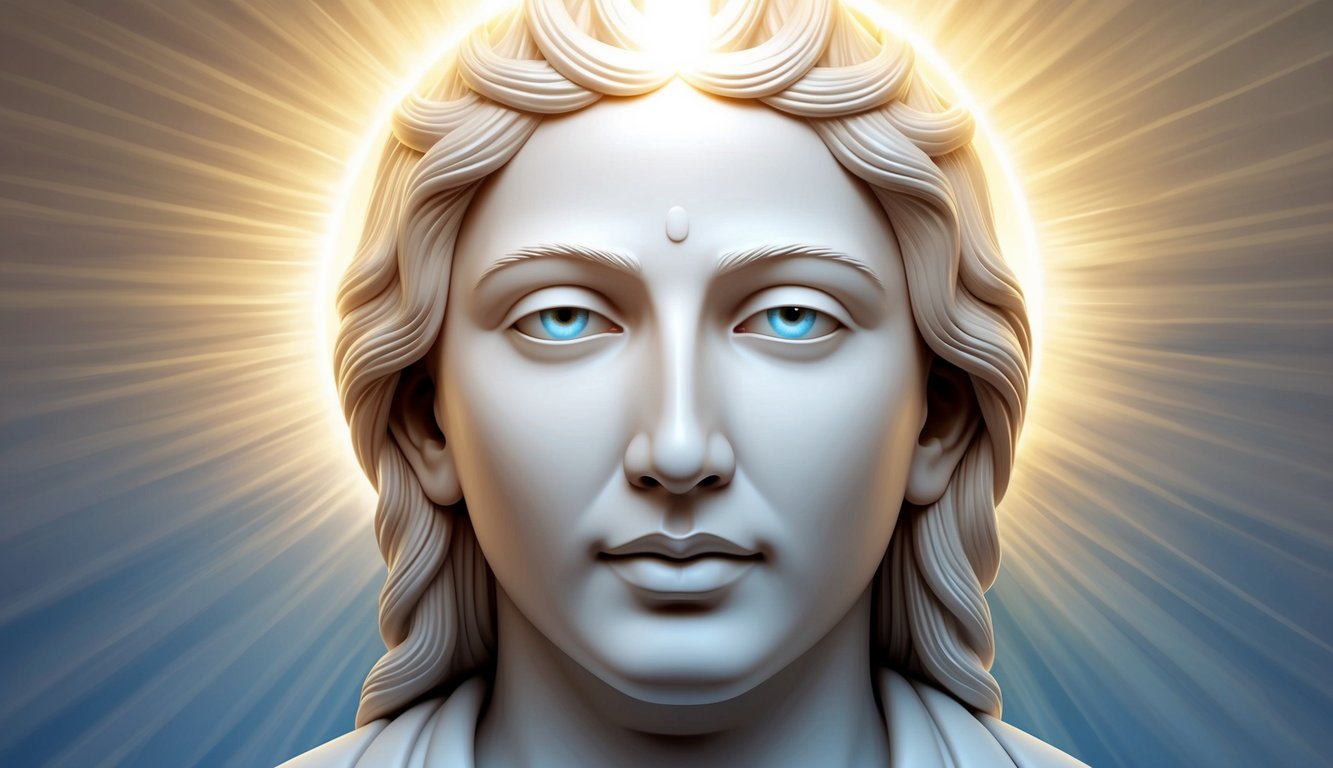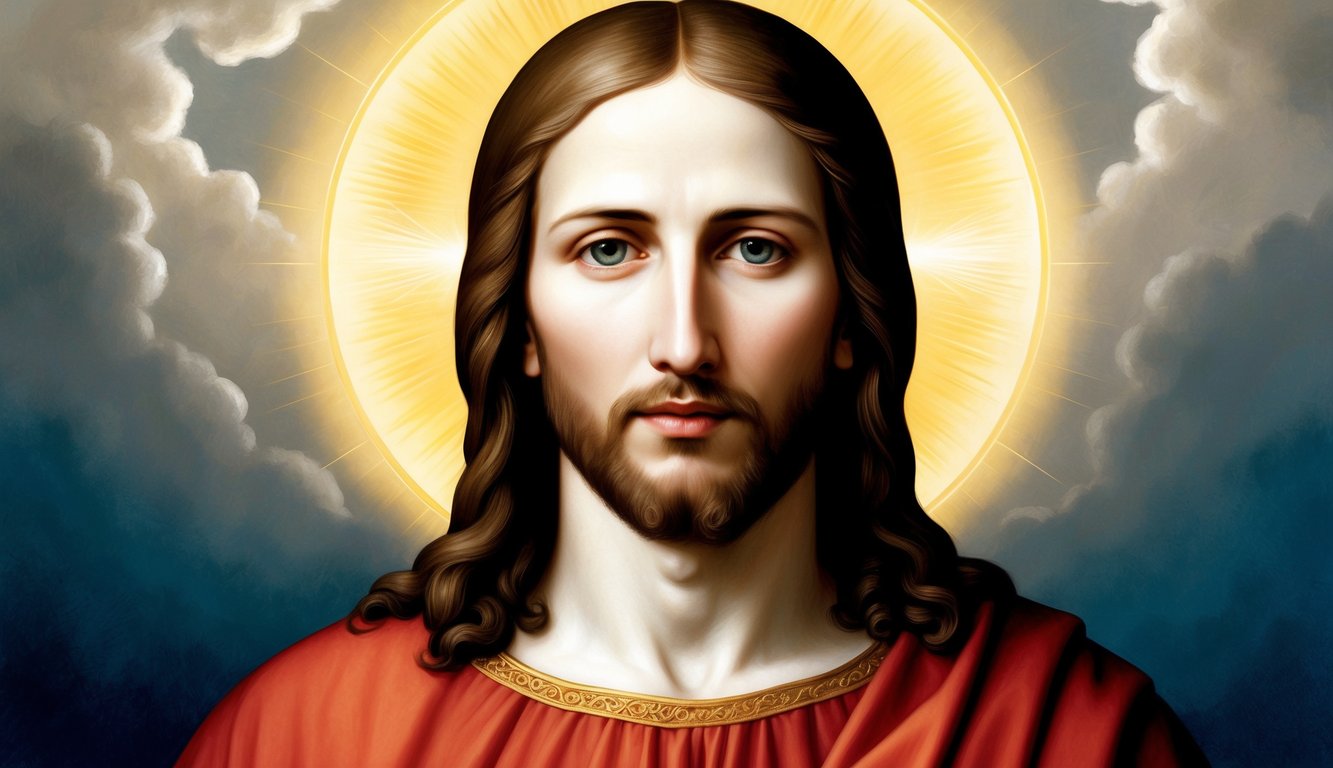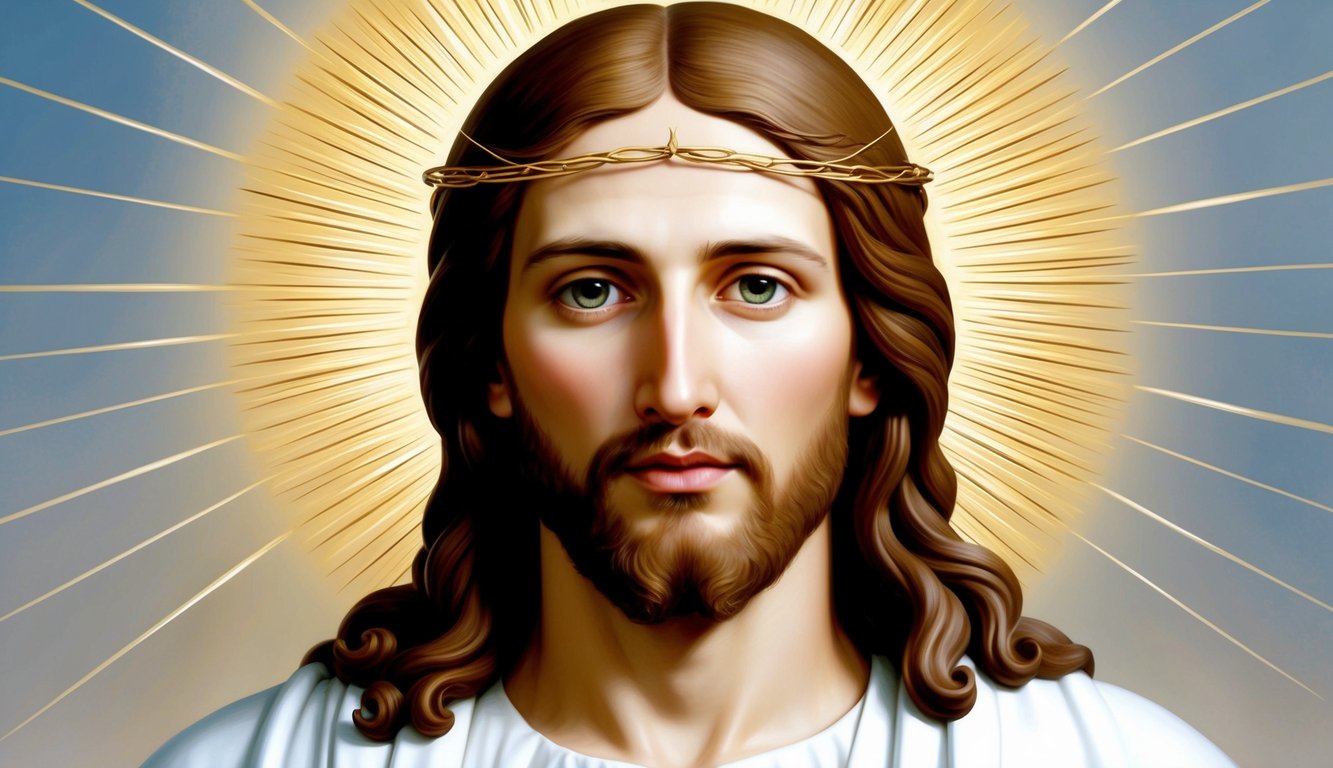Don’t Miss Out On This Unique Astrological Opportunity
Are you tired of spinning your wheels and getting nowhere? Simply put, you’re out of sync: you’re out of alignment with your astral configuration.
But: there’s a kind of map that can help you reclaim your alignment. Think of it as your own personal blueprint to success and happiness: a blueprint that will help you live your most amazing life.
Get started here.
The Holy Face of Jesus is a powerful symbol that captures the imagination and devotion of many believers around the world.
From ancient images like the Shroud of Turin to various depictions found in art and culture, this sacred face has been a focal point for prayer and reflection. The Holy Face connects the physical and spiritual realms.
You may be intrigued by how this image has influenced both theology and art over centuries.
Various traditions and stories revolve around the Holy Face, each adding depth to its meaning within the Christian faith.
This connection is not just historical; it continues to inspire devotion and raise questions about faith and representation.
The global impact of the Holy Face extends beyond religious communities, touching hearts and sparking interest in the mystery behind the iconic images.
As you explore this fascinating subject, consider how these depictions have shaped religious and cultural landscapes alike.
Key Takeaways
- The Holy Face of Jesus connects physical and spiritual realms.
- It influences art, theology, and personal devotion worldwide.
- The cultural impact extends beyond religious communities.
The Origin and Significance of the Holy Face of Jesus
The Holy Face of Jesus has fascinated believers and scholars for centuries.
It is primarily associated with artifacts like Veronica’s Veil and the Shroud of Turin.
These relics have inspired religious practices and art throughout history.
Veronica’s Veil and the Shroud of Turin
Veronica’s Veil is believed to be the cloth used to wipe Jesus’s face on his way to Calvary.
According to legend, the image of his face miraculously appeared on the fabric.
This event has been a source of devotion and is remembered in the Stations of the Cross.
The Shroud of Turin is another significant artifact, often associated with the Holy Face of Jesus.
Some believe this cloth was Jesus’s burial shroud, bearing his facial imprint.
While its authenticity is debated, many people continue to view it as an object of reverence.
The Feast of the Holy Face and Shrove Tuesday
The Feast of the Holy Face is a religious celebration that highlights devotion to the Holy Face of Jesus.
It is particularly observed in Tours, France, where the devotion gained prominence in the late 19th century.
This feast encourages followers to reflect on the face of Christ as a symbol of divine love.
Shrove Tuesday, the day before Ash Wednesday, also ties to these devotions.
It is a day of reflection and preparation for Lent.
During this time, the Holy Face of Jesus serves as a focus for meditation and prayer, reminding believers of Christ’s journey to the cross.
The Iconography in Art and Relics
Art and relics play a crucial role in depicting the Holy Face of Jesus.
Throughout centuries, artists have captured this image to evoke a deep spiritual connection for believers.
Paintings, sculptures, and other artworks depict either Veronica’s Veil or the Shroud of Turin.
Relics like these inspire a wide array of art across different cultures, reflecting various interpretations of Jesus’s face.
This art often aims to convey the profound impact of Jesus’s life and sacrifice, bridging historical events and spiritual truths.
Devotion to the Holy Face
Devotion to the Holy Face of Jesus holds a significant place in Catholic faith and practices.
This devotion includes prayers like the Golden Arrow, and key figures like St. Veronica and Pope Leo XIII have been influential in its spread.
The Chaplet and the Golden Arrow Prayer
The Chaplet of the Holy Face is a special prayer that many Catholics recite.
It is a way to honor Jesus and ask for His mercy.
The chaplet includes prayers and beads dedicated to different aspects of the Holy Face.
The Golden Arrow Prayer is another essential part of this devotion.
This prayer was revealed to Sister Marie of St. Peter and focuses on repairing the offenses against the name of God.
Saying the Golden Arrow Prayer is believed to bring blessings and peacefulness.
The Role of Saints and Key Figures
Various saints and key figures have promoted devotion to the Holy Face. St. Veronica is often remembered for wiping Jesus’ face on His way to Calvary.
Her story highlights compassion and faith.
Leo Dupont, also known as the “Holy Man of Tours,” played a crucial role.
His dedication to the Holy Face was inspiring.
Another vital figure, Maria Pierina de Micheli, introduced the Holy Face medal, which helped spread devotion.
Pope Leo XIII and Saint Therese of Lisieux also encouraged people to embrace this devotion.
Their work has made an impact on many followers, fostering a deeper love for Jesus.
The Sacred Affect on Catholic Faith and Practices
Devotion to the Holy Face has influenced Catholic practices in many ways.
It encourages believers to focus on the Passion of Christ and His suffering.
This devotion brings peace and spiritual growth to those who practice it.
Among the Carmelite communities, the Holy Face plays an essential role in daily prayers and reflections.
It serves as a reminder of Jesus’ sacrifice.
Religious traditions like Feast Days and Processions also celebrate the Holy Face, cementing its impact on the lives of the faithful.
The Theological Implications of the Holy Face

The Holy Face of Jesus holds deep theological meaning, touching upon its ties to biblical events and figures as well as embodying God’s attributes.
It also connects closely with Christ’s Passion, offering insights into his suffering and role as the Savior.
Connections to Biblical Events and Figures
The image of the Holy Face links closely with key biblical moments.
It reminds you of Bethlehem, where Jesus’ journey began, and Calvary, where it reached its peak.
The face reflects events like the Transfiguration, where divine glory was revealed, and the Resurrection, showcasing victory over death.
This reflection encourages believers to find deeper insights into Christ.
His divine and human natures are a perfect balance, represented by his sacred face, affirming theological truths in Christian faith.
These features elevate the Holy Face to a symbol of spiritual importance, interweaving with biblical narratives and figures that guide believers today.
Contemplating the Holy Face allows believers to connect more intimately with the mysteries of Christ’s dual nature, fostering a deeper appreciation for His role in salvation.
This devotion also ties into the meaning of Yahweh, emphasizing God’s eternal presence and covenant with His people.
Through such reflection, faith is strengthened, guiding followers toward a more profound spiritual journey.
The Holy Face as a Reflection of God’s Mercy and Justice
The Holy Face of Jesus symbolizes both God’s mercy and justice, acting as a spiritual guide.
It serves as a reminder of God’s willingness to forgive sins and emphasize divine compassion.
This sacred image also portrays justice, where Jesus’ teachings on right and wrong are central to understanding his role as the Savior.
By contemplating the Holy Face, you are drawn to meditate on these characteristics of God.
You witness how Christ embodies these traits through his actions and sacrifice, illustrating the balance between justice and mercy.
This duality reinforces the significance of the Holy Face as an essential spiritual symbol.
The Intersection with Christ’s Passion and Suffering
The Holy Face of Jesus holds a significant connection to his Passion and suffering.
It reminds you of the pain endured at the Crucifix, where Jesus shed his blood for humanity’s redemption.
This face is a powerful visual of the extent of his love and sacrifice.
In meditating upon this, you gain deeper insight into Christ’s role in bearing humanity’s burdens.
This reflection allows believers to connect personally with his suffering and appreciate his ultimate act of mercy.
It stands as a testament to his enduring sacrifice, representing redemption and the profound mysteries of faith.
The Cultural and Global Impact of the Holy Face

The Holy Face of Jesus carries both deep spiritual and cultural importance.
Its influence extends into religious practices and expressions of faith around the world, impacting liturgy, symbols, and cultural adaptations.
Influence on Christian Liturgy and Symbols
The devotion to the Holy Face is a vital part of Christian liturgy. Prayers and hymns focusing on the Holy Face invite you to reflect deeply on Jesus’ suffering and love.
Specific liturgical practices, such as the Holy Face Medal, enhance these spiritual reflections.
In Catholic traditions, the Holy Face is included in certain masses and devotions.
Pope Pius IX actively promoted this devotion, emphasizing its importance.
You will often see the Holy Face depicted in sacred art, which plays a role in creating a spiritual atmosphere in places of worship.
The images help connect you to the face of Jesus, encouraging a personal and communal sense of faith.
Adaptations and Veneration Across Different Cultures
Different cultures have their unique ways of venerating the Holy Face.
In Asia and Africa, the image is woven into local artistic expressions and religious practices.
This showcases the importance of the face of Jesus in a global context.
The cultural significance of these adaptations highlights the inclusivity of the faith.
Each culture brings unique artistic styles to portray the Holy Face, enriching the global community’s spiritual experience.
This wide-reaching devotion helps bring people together, fostering a shared faith while respecting individual cultural identities.
Through these adaptations, the Holy Face transcends boundaries, revealing its lasting impact on a worldwide audience.
Frequently Asked Questions

When exploring the topic of the Holy Face of Jesus, you will find discussions on its historical significance, use in devotion, related prayers, miracles, comparisons to the Shroud of Turin, and the story of Saint Veronica.
What is the historical significance of the Holy Face of Jesus relic?
The Holy Face of Jesus is an important relic for many Christians.
It is believed to be an imprint of Jesus’s face on cloth.
This relic is often associated with the passion of Christ and holds a special place in Christian history and art.
How can the Holy Face of Jesus medal be used as a devotional object?
The medal represents a symbol of devotion and is worn or carried by believers.
Many use it to focus their prayers and meditations on the teachings and sufferings of Jesus.
It serves as a reminder of faith and the presence of Jesus in their lives.
What are the common prayers associated with the Chaplet of the Holy Face of Jesus?
The Chaplet of the Holy Face includes specific prayers that honor the image of Jesus.
These prayers often emphasize reparation for sins and asking for divine mercy.
They hold an essential role in enhancing personal devotion and reflection on Jesus’s sacrifice.
In what ways is the Holy Face of Jesus believed to have manifested miracles?
Some believers claim that the Holy Face relic has performed miracles.
They report healing and conversion experiences after venerating the image.
These stories have contributed to its revered status as a powerful symbol of faith and divine intervention.
How does the image of the Holy Face of Jesus at Manoppello compare to the Shroud of Turin?
The image at Manoppello is often compared to the famous Shroud of Turin.
Both are considered significant Christian relics.
Some suggest the Manoppello image precisely matches the facial features found on the Shroud, sparking debates on authenticity and origin.
What is the story behind Saint Veronica and the Holy Face of Jesus?
Saint Veronica is known for her legendary act of compassion during Jesus’s walk to Golgotha.
She is said to have wiped Jesus’s face, and his image miraculously appeared on her cloth.
This story has been cherished as a powerful testament to kindness and faith in action.



